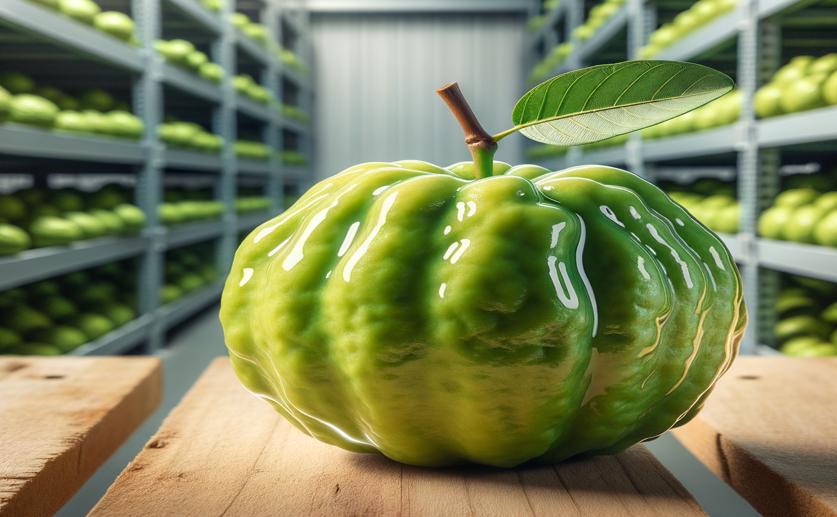
New Edible Coating Keeps Guava Fresh and Firm During Storage
Jim Crocker
28th July, 2024

Image Source: Natural Science News, 2024
Key Findings
- The study by Bahauddin Zakariya University explored using Albizia gum (AZG) as an edible coating to extend the shelf life of guava fruits
- AZG coating significantly reduced weight loss and decay in guavas by up to 27.43% and 36%, respectively
- Guavas coated with 4.5% AZG maintained higher levels of acidity, ascorbic acid, antioxidants, phenolics, and flavonoids after 15 days of storage
References
Main Study
1) A novel edible coating based on Albizia [Albizia lebbeck (L.) Benth.] gum delays softening and maintains quality of harvested guava fruit during storage.
Published 25th July, 2024
https://doi.org/10.1016/j.ijbiomac.2024.134096
Related Studies
2) Recent Advances in Novel Packaging Technologies for Shelf-Life Extension of Guava Fruits for Retaining Health Benefits for Longer Duration.
3) Antimicrobial edible films and coatings for fresh and minimally processed fruits and vegetables: a review.
4) Recent advances on polysaccharides, lipids and protein based edible films and coatings: A review.



 24th May, 2024 | Jenn Hoskins
24th May, 2024 | Jenn Hoskins